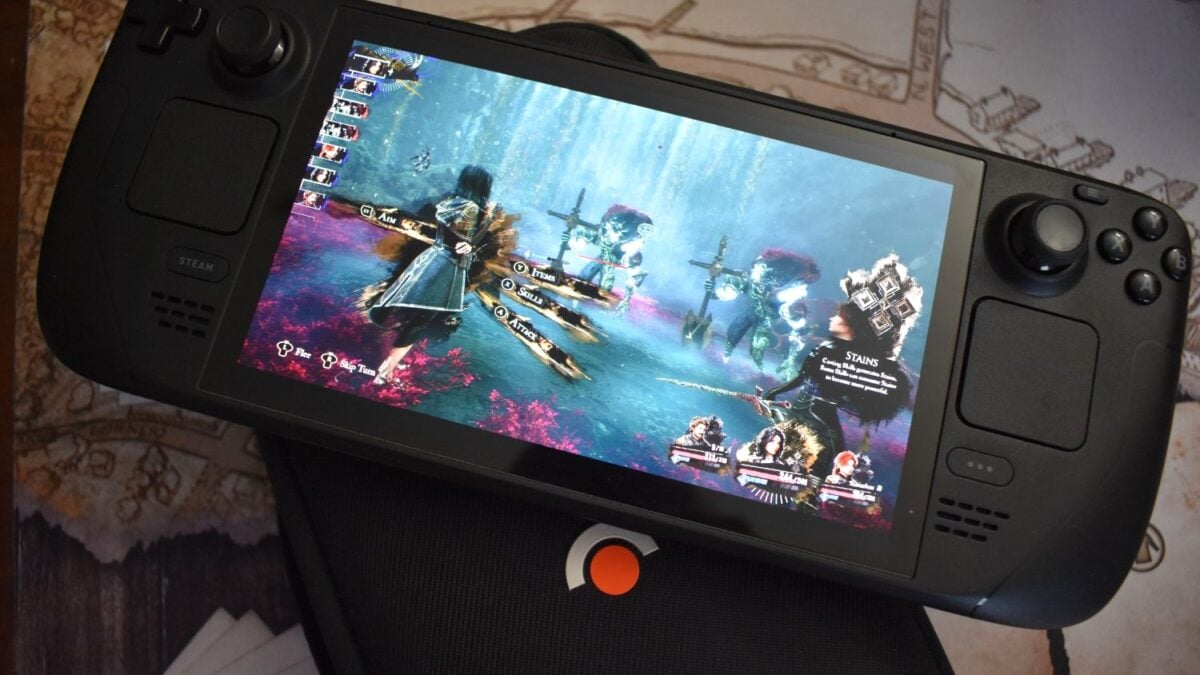Game Streaming Will Never Be the Same After Nvidia's GeForce Now Update

What if game streaming was your main way to play your games? That idea—once merely a pipedream—is inching closer to reality with Nvidia’s latest update to GeForce Now. Come September, players will be able to rent out a server worth 100GB or more to play whatever game they want, so long as they already own it. Even with more games and better streaming visuals, streaming can’t replace all your gaming gear. But if you were feeling antsy about how much that new PC upgrade or future console could cost, a $20-per-month sub may seem like a bargain in comparison.
This “Install to Play” feature will be available to all paying members of GeForce Now sometime next month. A publisher needs to “opt in” to let their game be streamed remotely, so you may need to wait for your entire Steam library to be available. When the service is up and running, any compatible games can then be downloaded to a remote PC and played during a single session. But say you want to continue your game without needing to redownload it? Nvidia said it will allow users to effectively rent out 200GB of persistent cloud storage starting at $3 extra per month. More download space will cost more.
[embed]https://www.youtube.com/watch?v=fuJFzmVmm-c[/embed]
Microsoft has made similar moves recently with Xbox Game Pass service. Subscribers can stream some select PC and console games they already own on the Xbox PC app. Compared to that, Nvidia’s Install to Play could make a massive windfall of titles available to stream from any place with a good-enough internet connection.
There are other streaming services like Shadow PC, which allow you to effectively rent out a remote PC and operate it like your own, but those can cost between $38 and $50 per month. If the streaming quality holds up, Nvidia’s Install to Play, plus the already sizable library of games available to stream, could effectively max out your PC games library. GeForce Now already has apps on PC, Mac, and mobile, along with a dedicated application on Steam Deck. Nvidia also plans to release a specific app for the Legion Go S handheld with SteamOS. This version will allow you to play at 4K and 120 fps connected to a TV via HDMI.
There are several major changes coming for those who subscribe to the GeForce Now Ultimate subscription. Everybody spending $20 a month will be able to access 4K resolution at 120 fps and RTX 5080-level graphics capabilities through the cloud, a jump up from the previous RTX 4080. The new GPU will be hosted on Nvidia’s servers at no additional cost to users. Finally, users will be able to play games at 5K resolutions. That will mean additional widescreen support for massive curved monitors like LG’s 5K2K UltraGear monitors.
The big benefit now for paying the $20 subscription is access to “Cinematic” quality streaming mode. Essentially, the mode promises even better visuals than what you normally get with streaming. For those enjoying 100 Mbps download speeds, in-game trees will no longer look like a pixelated collage of stems and leaves. Streaming has the tendency to wash out colors and make details less distinct. Nvidia claims Cinematic quality mode will even make in-game HUDs and menus more legible. The mode could result in more accurate colors for games that support HDR, or high dynamic range, for better contrast between darks and lights. SDR content will still look better, but to a lesser degree.

How much better performance you will get from various titles will depend on the game. In our tests of the Nvidia GeForce RTX 5080 GPU, we saw the card could get around 8% better frame rates on average compared to the RTX 4080 Super. Nvidia has a bad habit of showing off multi-frame gen capabilities on its GPUs and comparing the improvements to older graphics cards. Multi-frame gen is a technique where the GPU can insert multiple generated frames in between two rendered frames, increasing the overall responsiveness of a game. Older GPUs like the RTX 4080 could only do 2x frame gen, while the 50-series can handle up to 4x. Yes, a GPU doing twice as much frame gen will result in higher frame counts, if that’s the only thing you care about.
There are drawbacks to frame generation. The technology can introduce small visual glitches that aren’t there when the game is rendered fully natively. Frame generation also introduces latency between what you’re seeing on screen and what’s rendered by the graphics processing pipeline. Latency can be a real killer for game streaming, but Nvidia told Gizmodo it upgraded the CPU and memory in its SuperPOD servers with new technology, which will offset frame gen latency.
Nvidia also changed its formula for data packets, the unit of data formatted for telecommunication networks, to “intelligently,” which will result in fewer dropped packets. The company is working with major telecom companies like CableLabs and Comcast, as well as T-Mobile and its L4S network, for this new data technique.
Look, Nvidia isn’t going to go to communities and set up quality internet. GeForce Now still can’t completely replace a console or PC, not when the service is so dependent on your home internet speeds. Late last year, Nvidia added support for 1440p streaming and the ability to save graphics settings between games. The rub was the new limitation of 100 hours of playtime each month. The company has yet to raise streaming prices, but when every major streaming service’s prices are ballooning every year, you shouldn’t expect to keep shelling out the same amount for much longer.









